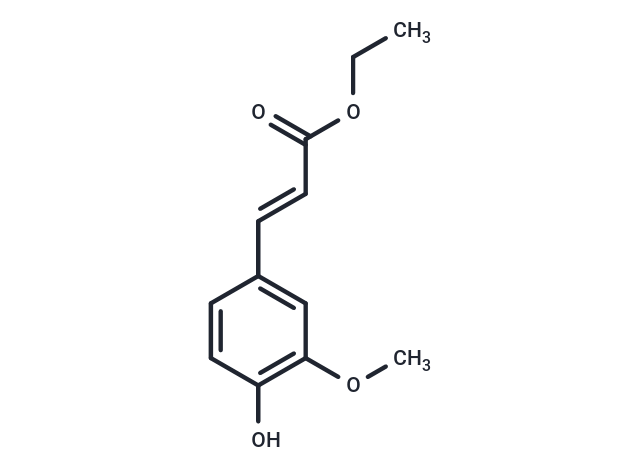 您的购物车当前为空
您的购物车当前为空
Ethyl (E)-ferulate
一键复制产品信息Ethyl ferulate could be used for therapeutic purposes as a potent inducer of HO-1 for the protection of brain cells against oxidative and neurodegenerative conditions.

Ethyl (E)-ferulate
一键复制产品信息Ethyl ferulate could be used for therapeutic purposes as a potent inducer of HO-1 for the protection of brain cells against oxidative and neurodegenerative conditions.
| 规格 | 价格 | 库存 | 数量 |
|---|---|---|---|
| 20 mg | ¥ 1,350 | 待询 |
产品介绍
| 产品描述 | Ethyl ferulate could be used for therapeutic purposes as a potent inducer of HO-1 for the protection of brain cells against oxidative and neurodegenerative conditions. |
| 体外活性 | In the CNS, the heme oxygenase (HO) system has been reported to be active and to operate as a fundamental defensive mechanism for neurons exposed to an oxidant challenge. We have recently shown that both curcumin and caffeic acid phenethyl ester, two phenolic natural compounds, potently induce HO-1 expression and activity in rat astrocytes. We have extended our previous findings examining the effects of two other plant-derived phenolic compounds, with analogous chemical structures, in rat astrocytes and neurons. METHODS AND RESULTS: Ethyl ferulate (Ethyl (E)-ferulate, ethyl 4-hydroxy-3-methoxycinnamate) (EFE), the naturally occurring ester of ferulic acid, was able to induce HO-1 protein expression. Maximal expression of HO-1 mRNA and protein and a significant increase in HO activity were detected after 6 h of incubation with 15 microM EFE in astrocytes and 5 microM EFE in neurons. Higher concentrations of EFE (50 microM) caused a substantial cytotoxic effect with no change in HO-1 protein expression and activity. Exposure of astrocytes to resveratrol, a phytoalexin derived from grapes, resulted in an increase of HO-1 mRNA, but it was not able to induce HO-1 protein expression and activity. Interestingly, preincubation (12 h) of neurons with EFE resulted in an enhanced cellular resistance to glucose oxidase-mediated oxidative damage; this cytoprotective effect was considerably attenuated by zinc protoporphyrin IX, an inhibitor of HO activity. CONCLUSIONS: This study identifies a novel natural compound that could be used for therapeutic purposes as a potent inducer of HO-1 for the protection of brain cells against oxidative and neurodegenerative conditions. |
| 分子量 | 222.24 |
| 分子式 | C12H14O4 |
| CAS No. | 28028-62-8 |
| 密度 | 1.31g/cm3 |
| 存储 | Powder: -20°C for 3 years | In solvent: -80°C for 1 year | Shipping with blue ice/Shipping at ambient temperature. |
计算器
体内实验配液计算器
以上为“体内实验配液计算器”的使用方法举例,并不是具体某个化合物的推荐配制方式,请根据您的实验动物和给药方式选择适当的溶解方案。
剂量转换
对于不同动物的给药剂量换算,您也可以参考 更多





 还可以
还可以
 |
|